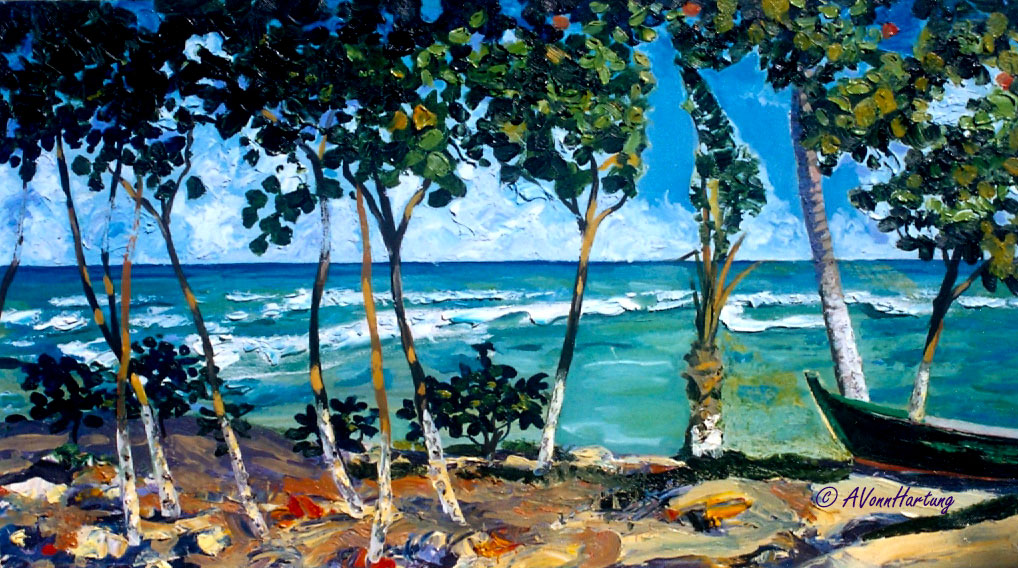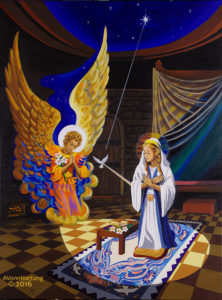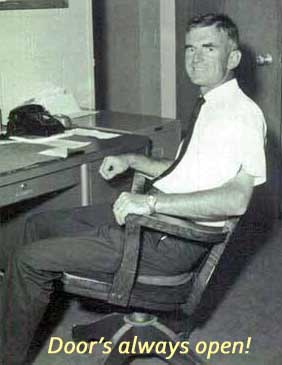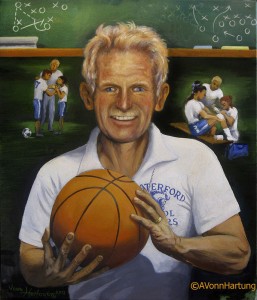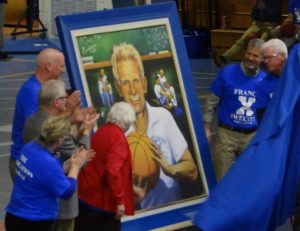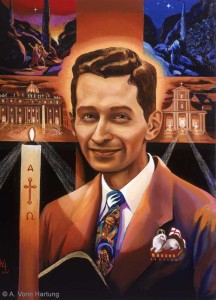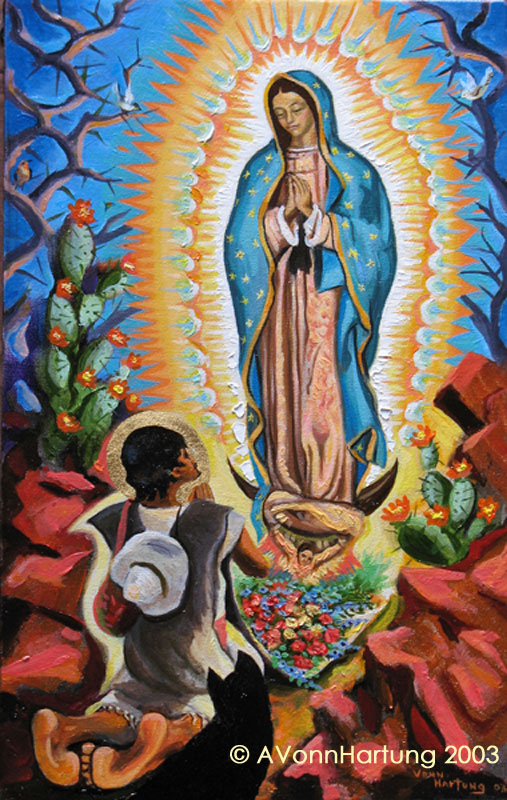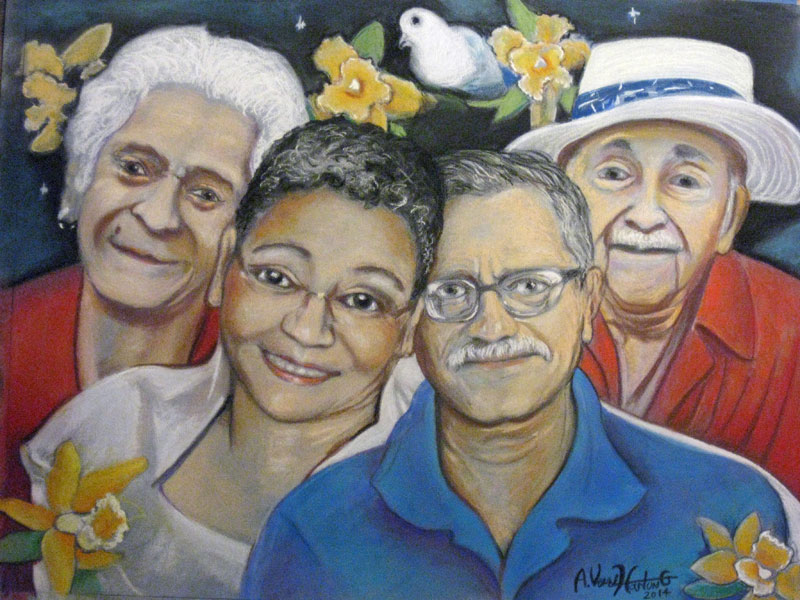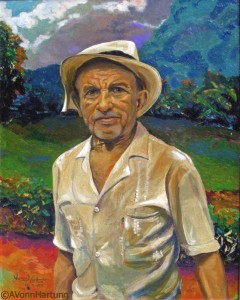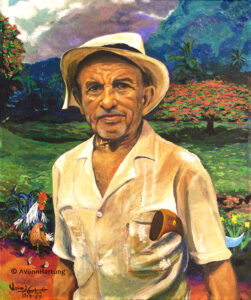(Scroll down for Spanish text)
In celebration of St.Francis Xavier, Patron Saint of Missionaries
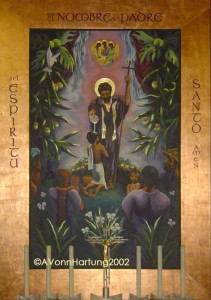 This painting shows the humble Jesuit missionary baptizing a youth
This painting shows the humble Jesuit missionary baptizing a youth
St. Francis Xavier brought more than 30,000 souls into the Faith. Known as the “Apostle of the Indies” and “Apostle of Japan”, he is said to have converted more people than anyone else has since Saint Paul, the Apostle.
Padre Julio Victor García commissioned this painting/retablo in 2002 for Iglesia San Francisco Javier (Trujillo Alto, Puerto Rico). It measures 6 feet in width by 11 feet in height and is my original design. I built it from solid mahogany, painted it in acrylic, and gilded it with gold and copper leaf.
Symbolic elements of the painting
The vertical format symbolizes this world, our Church, and the witness of the life and evangelizing work of San Francisco Javier.
The frame displays the Sign of the Cross with which we as Christians identify ourselves in and through Baptism. It represents the tireless work of St. Francis, from sunrise to sunset. Additionally, it shows the eternal truth, the Alpha and Omega of Christ. It acts as a window through which we enter to find further truths.
St. Francis Xavier is baptizing a youth. Significantly, the youth symbolize the future church. Hence, we see the people coming to the Faith.
The Holy Family is represented by all who do the Will of the Father. Specifically, they are bringing young souls to be saved.
The Children brought forth by their Godparents engage us in reflection and contemplative prayer.
The Holy Trinity: Above the head of St. Francis, we see the sacred image of the Holy Trinity. The great 15th-century Russian iconographer Andre Rublev con. Its inclusion is meant to draw us into the mystery of God and to remind us of God’s love. Additionally, it prophetically reminds us of Jesus’ words as expressed in John 15 26-27 (“When the Advocate comes whom I will send you from the Father, the Spirit of truth that proceeds from the Father, he will testify to me. And you also testify, because you have been with me from the beginning.”)
The Background: Surrounding this cascade of divinity with its luminous light and vapors are luxurious examples of Holy Creation. Specifically, the abundance of nature expresses this concept. The breadfruit and mango trees symbolize Love, Beauty, and Resurrection. Additionally, we see the dove drawing closer, and the serpent, which is being driven away.
“They who pray with faith have fervor, and fervor is the fire of prayer. This mysterious fire has the power of consuming all our faults and imperfections, and of giving to our actions, vitality, beauty, and merit.” (Francis Xavier)
***********************************
En celebración de San Francisco Javier, Patrón de los Misioneros

Esta pintura muestra al humilde misionero jesuita bautizando a un joven.
San Francisco Javier convirtió a más de 30.000 almas a la fe. Conocido como el «Apóstol de las Indias» y el «Apóstol del Japón», se dice que convirtió a más personas que nadie desde San Pablo, el apóstol.
El Padre Julio Víctor García encargó esta pintura/retablo en 2002 para la Iglesia San Francisco Javier (Trujillo Alto, Puerto Rico). Mide 6 pies de ancho por 11 pies de alto y es mi diseño original. La construí con caoba maciza, la pinté con acrílico y la doré con pan de oro y cobre.
Elementos simbólicos de la pintura
El formato vertical simboliza este mundo, nuestra Iglesia y el testimonio de la vida y la obra evangelizadora de San Francisco Javier.
El marco muestra la Señal de la Cruz, con la que los cristianos nos identificamos en y a través del Bautismo. Representa la labor incansable de San Francisco, desde el amanecer hasta el anochecer. Además, muestra la verdad eterna, el Alfa y la Omega de Cristo. Actúa como una ventana por la que entramos para encontrar verdades más profundas.
San Francisco Javier bautiza a un joven. Significativamente, los jóvenes simbolizan la iglesia futura. Por lo tanto, vemos a las personas acercarse a la fe.
La Sagrada Familia está representada por todos los que hacen la voluntad del Padre. Específicamente, traen almas jóvenes para la salvación.
Los niños traídos por sus padrinos nos invitan a la reflexión y a la oración contemplativa.
La Santísima Trinidad: Sobre la cabeza de San Francisco, vemos la sagrada imagen de la Santísima Trinidad. El gran iconógrafo ruso del siglo XV, André Rublev, la configuró. Su inclusión busca adentrarnos en el misterio de Dios y recordarnos su amor. Además, nos recuerda proféticamente las palabras de Jesús expresadas en Juan 15:26-27: «Cuando venga el Consolador, que yo os enviaré de parte del Padre, el Espíritu de verdad que procede del Padre, él dará testimonio de mí. Y vosotros también daréis testimonio, porque habéis estado conmigo desde el principio».
El contexto: Rodeando esta cascada de divinidad con su luz luminosa y sus vapores, se encuentran suntuosos ejemplos de la Sagrada Creación. En concreto, la abundancia de la naturaleza expresa este concepto. Los árboles del pan y del mango simbolizan el amor, la belleza y la resurrección. Además, vemos a la paloma acercándose y a la serpiente, que es ahuyentada.
Quienes oran con fe tienen fervor, y el fervor es el fuego de la oración. Este fuego misterioso tiene el poder de consumir todas nuestras faltas e imperfecciones, y de dar a nuestras acciones vitalidad, belleza y mérito. (Francisco Javier)
